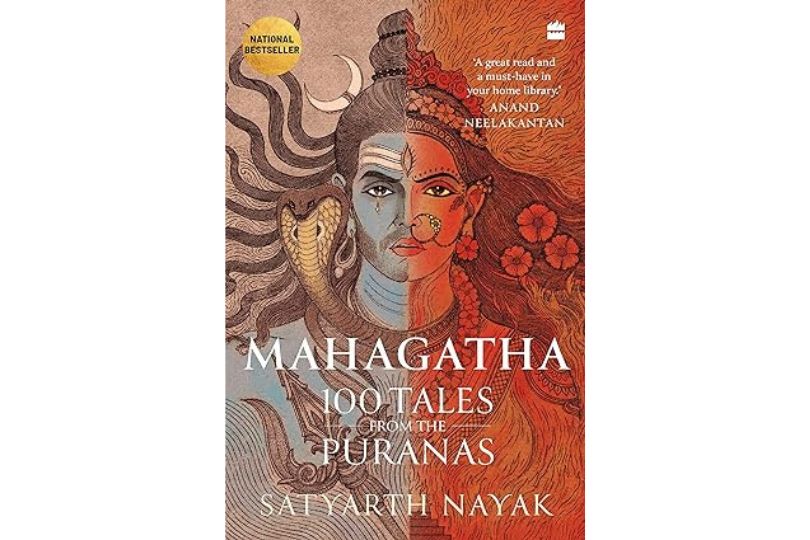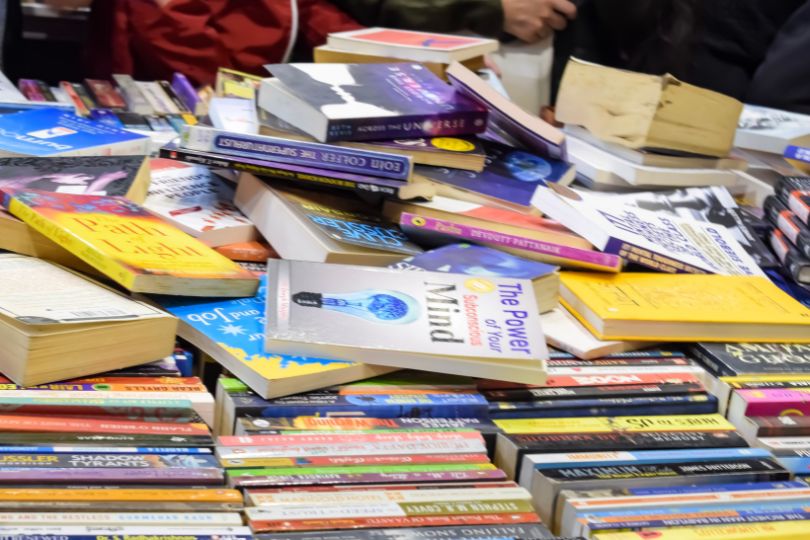Interview with Chitwan Mittal, author of “All Your Emotions are like Mine?”
I am a strong believer in having a frank, honest conversation to try and help your child to express how they’re feeling, to empathise with them and tell them it’s okay that they’re feeling that way.on Apr 06, 2023
.jpg)
Chitwan Mittal holds a BSc in English Education from Boston University and an MA in Values in Education from the University of London. She is a published author with titles such as Education for the Complete Person, Taittiriya Upanishad and The Arguments for the Existence of God. Actively involved in children’s education since 2005, she was part of the committee that established the Indian Institute of Teacher Education and the Children’s University by the Government of Gujarat, India. Both institutes are focussed on experiential learning and holistic development of children through innovative education tools. She is now foraying into the field of writing children’s picture books. Her books encourage engagement and diversity and focus on value-oriented education, bi-lingual learning and South Asian culture. She lives between India and Singapore with her husband and two sons, who are her constant source of inspiration.
Frontlist: What inspired you to write a book that acquaints children with emotional literacy, and why do you think it's essential for young children to understand their emotions?
Chitwan: The ability to acknowledge and deal with our emotions influences everything in our lives, especially our interpersonal relationships. Whether we know it or not, whether we call it that or not, emotional literacy is something everyone can benefit from, adults and children alike. Many of us may not have grown up being explicitly taught to name and understand our emotions or talk about them, but as parents and educators have grown more aware of emotional literacy as a concept, there has been a real interest in teaching kids to handle their emotions in a healthy manner. I have always believed in the importance of emotional literacy, so it was a natural step to publish a book on it when I started AdiDev Press.
Frontlist: Your book emphasizes the importance of taking a deep breath when dealing with overwhelming emotions. Can you share other tips or techniques for helping young children manage their emotions?
Chitwan: There’s no trick to it—no quick fix that will work. For me, the main thing is to remain calm and engage with my children with empathy and patience. As a parent, you can often become frustrated with your child’s feelings, and may prefer to quickly deal with a tantrum by distracting your child. This, in my opinion, is counter-productive.
I am a strong believer in having a frank, honest conversation to try and help your child to express how they’re feeling, to empathise with them and tell them it’s okay that they’re feeling that way. They need to understand that it’s OK to feel negative emotions, and that you’ll be there to support them through it.
Other things that will help is teaching them the words for their feelings early on, so that they can express to you what they’re feeling, and making them feel comfortable with sharing their emotions with you—never, ever judge them or make fun of them. Also, show them that it’s all right for them to take some to think about their feelings, to sit by themselves quietly and process their emotions. All of this may seem impossible to implement when you have a screaming toddler on your hands, but it really does help in the long-run!
Frontlist: How can your book benefit children with special needs or those who struggle with identifying and expressing emotions?
Chitwan: The book would be useful for any one, any child. All children face difficulty naming, understanding and handling their feelings; I’d go so far as to say many adults do too! I believe the book could benefit anyone who reads it.
Frontlist: The book highlights the minimal text yet conveys a powerful message. Can you discuss your approach to writing for young children and how you balanced simplicity with depth?
Chitwan: Creating content for emerging readers is always challenging because it has to hit just right; every word you use has to do something, and there’s no room for filler. It’s also important to have a fresh approach and avoid being didactic or old-fashioned just because the book is for children.
We chose to use illustrations to set the mood and tone for the book, rather than making the book text-heavy. Children respond to colour and art on an emotional level, so thinking about how the book could be read pictorially as well as verbally influenced how we put it together. Most importantly, we knew we had to create lovable characters whom kids would relate to. Although the book may look simple because it doesn’t have much text, there is a lot of work that goes on behind the scenes!
Frontlist: Your book features a girl and her lion friend as the main characters. Can you tell us more about why you chose these particular characters and what you hope they represent to young readers?
Chitwan: For this picture book, we wanted to design a child character that would express a wide range of emotions that children experience. A girl child protagonist was the obvious choice in support of creating more books with girls as central characters, and we wanted an animal companion with whom we could show the interplay of emotions. We introduce the lion as a small toy which grows into a real character and then goes back to being a hand-held toy in order to combine both the realistic and the imaginary. Similarly the characters are depicted in a variety of real-world locations, including parks, homes, and swimming pools, as well as flying in a paper aeroplane or sailing in a paper boat. We felt this reflects children’s whimsical view of the world, where the imaginary and the real often blend together; we felt they would be better able to connect with the story if we evoked this in the book.
The characters in the books frequently serve as relevant examples of positive role models, exhibiting determination, resilience, and more. Young readers can identify with the characters' “up and down” emotional experiences in this book and the value of respecting one's feelings, no matter what they may be.
Frontlist: The illustrations in the book are very minimalistic, focusing on color and texture. What inspired this style, and how does it complement the book's message about emotions?
Chitwan: The illustration style was developed keeping in mind the universal theme of the book. To young readers, the colours and textures in the background offer scope for observing details and intricate patterns while the characters' expressive faces and actions make it easier for them to recognise and relate to the emotions shown.
Frontlist: The book features various emotions, from happiness to fear to excitement. How did you approach capturing these different emotions in your illustrations?
Chitwan: For this book we have attempted to capture the various emotions not just through the facial expressions and actions of the characters but also by creating a visual story to give each emotion a context.
Frontlist: What do you hope readers take away from the visual elements of "Are Your Emotions Like Mine?"
Chitwan: The visual elements are very much a vehicle for the central message of the book, which is that it is OK to have strong feelings, that others know what our feelings are like and can help us deal with them. We hope that readers observe the tone, mood and details in the visuals and build their own interpretations of the emotions they go through in different situations and contexts.


.jpg)







.jpg)

















Sorry! No comment found for this post.